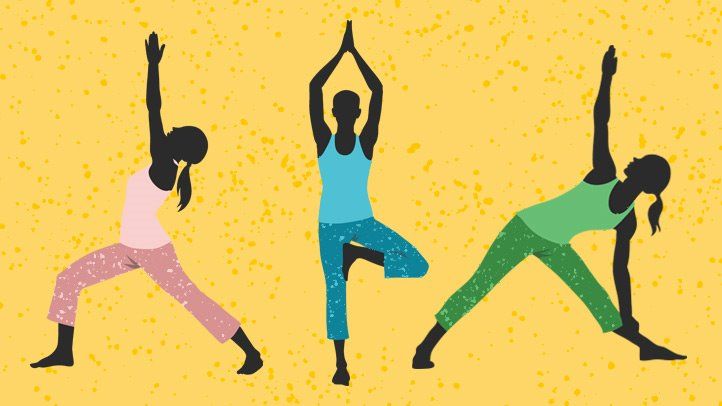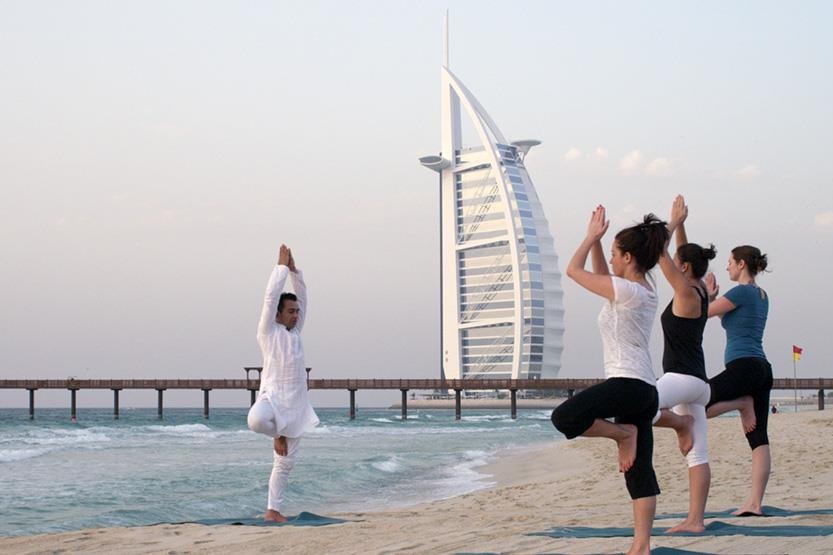Yoga for Beginners: Everything You Need to Know

SIGN UP FOR YOUR FREE DAY PASS TODAY!
yoga meaning
Yoga means a lot of different things to a lot of different people.
From the spiritual, mindfulness practice, to the flexibility and mobility it promotes, to the full body strength and core control, to the simple act of taking time out of your day to care for yourself, it can offer a broad range of benefits.
Regularly practicing yoga can help you to build a variety of good habits: self-discipline, mindfulness and self-inquiry, the ability to let go, whether that be of stress, material objects, or simply the constant alertness we all feel in our busy lives.
It should be about conscious living and empowerment. To many, yoga means a path to greater internal states, such as clarity, peace, and happiness.
In fact, in the second verse of the first book of The Yoga Sutras of Patanjali, (composed pre-400 AD), yoga is defined as the ‘cessation of mind wandering’.
This is hard and incredibly beneficial in today’s world.
Living in big cities, surrounded by hustle and bustle, forever plugged in to the virtual world of the internet, our minds and nervous systems are being constantly stimulated.
Yoga offers a space to detune from this, all whilst taking care of your physical wellbeing.
As we’re about to see, there are some really quite profound benefits to be gained from regular yoga practice.
yoga history
The history and origins of yoga are not clearly agreed upon, except that it started in ancient India. There are two main ideas about how yoga began.
The first theory says yoga came from the Vedic tradition (ancient religious texts) and later influenced Buddhism.
This idea is mostly supported by Hindu scholars. The second theory, more popular in Western studies, suggests that yoga is a mix of local Indian practices and some Vedic elements.
Yoga started to get mentioned around 500-200 BCE in early spiritual texts of Hindu, Jain, and Buddhist traditions.
From 200 BCE to 500 CE, these traditions began to shape their philosophies and write them down as sutras (teachings), leading to the development of a detailed system of yoga known as Patanjaliyogasastra.
During the Middle Ages, various new forms of yoga emerged.
In the mid-19th century, Western scholars started to take an interest in yoga and other Indian philosophies.
source : https://en.wikipedia.org/wiki/Yoga
types of yoga

Popular types of Yoga:
- Vinyasa yoga
- Hatha yoga
- Iyengar yoga
- Kundalini yoga
- Ashtanga yoga
- Bikram yogaYin yoga
- Restorative yoga
- Prenatal yoga
- Anusara yoga
- Jivamukti yoga
Yoga for the body
Yoga brings about some great benefits to your body. Regular yoga practice can help to increase and improve:
- flexibility
- strength
- mobility
- balance
Yoga postures will take your body through a full range and variety of motions.
Collectively, yoga postures can help to counteract aches and pains associated with tension, weakness, muscular imbalances and/or poor posture.
They are also physically challenging, with a great deal of resistance and isometric tension included in their performance, especially in more advanced movements.
This will lead to an increase in strength and musculature over time.
- Read more: yoga in riyadh
Yoga for stress, relaxation and happiness
Yoga helps people to deal with stress and, in turn, to relax, both physically and mentally.
Constant stress accumulates: this can send your nervous system into constant overdrive. This will make it hard to chill out, to unwind, to focus and to switch ff.
The stretching and strength work involved with yoga can help with this.
Stretching out your muscles and achieving mobility will help to mitigate many of the physical manifestations of stress.
The strength work will tire you out, making it easier to switch off and sleep, and will elicit endorphin release proven to relax you and lighten your mood.
For those of a more spiritual or philosophical persuasion, yoga can go beyond the physical.
It can help you to connect more deeply to your sense of purpose and awareness of living in the present- conscious living with self-awareness and mindful existence is a natural bedfellow to many yogis.
Broadly speaking, we can look at two key elements when thinking about mindfulness:
- Becoming aware of the physical and emotional sensations in your body.
- Noticing these sensations without judgment.
Controlling your breath is an integral part of yoga.
The formal name for this practice is pranayama. “Prana” can be explained as life force, energy, or qi, while “ayama” is the Sanskrit word for extension.
These exercises that at yoga’s heart can help lower your heart rate and shift your nervous system into a more relaxed state, whilst working as a perfect aid to this mindful state.
This will all in turn aid in improved sleep and mental clarity.
yoga classes in UAE

If you’re looking for yoga in Dubai, or yoga in Abu Dhabi, there are a few things to bear in mind.
Of course, there are plenty of options, from classes in large gyms to more intimate studio settings.
However, choosing the right fitness class for you is important: most of us would feel nervous and trepidatious at beginning a new practice, but finding the right setting and an instructor you click with can help you feel more relaxed.
There are many different yoga styles and there are plenty of options as to where yoga classes are hosted.
First off, find a few practices near you that offer classes suitable to your timetable and try them out. See what style works for you.
Good places to look are:
- neighbourhood yoga studios (plenty in the UAE)
- gyms and leisure centres (again, loads to choose from)
- integrative health practices, like physical therapy offices and so on
- online yoga programs and websites, including many popular YouTubers
- private yoga instructors
- workplace and corporate yoga
- seasonal, donation-based outdoor yoga events
If you’ve tried yoga before, jump straight in.
If you’re new, ask if the venue or space you’re working in offers beginner classes- most will.
Once you’ve found the style that suits you, go along once or twice a week. Get used to it, learn what you’re good at, what you need to work on, and what is most useful to you.
The poses, flow and mindset will start to come more and more naturally to you, and the mental and physical benefits of the practice will start to show.
Then you may be ready to start more advanced classes, or you may be happy where you’re at.
Whichever way, yoga could be the missing ingredient in your life and in your health and fitness journey. Give it a go.
GET YOUR FREE TRIAL TODAY
















































































